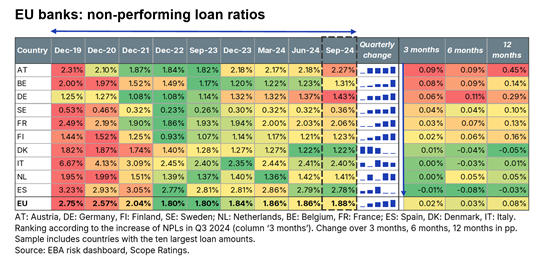Announcements
Drinks

EU banks’ NPL Heatmaps: marginal increase in non-performing loan ratio
“Our expectation remains for a continued but moderate deterioration in asset quality in coming quarters, mainly as a result of weakness in the corporate sector,” said Tatiana Fomenko, an analyst in Scope’s financial institutions team. “However, downside risks to banks’ credit profiles will likely remain limited, given the easing of monetary policy.”
Additions to NPLs were mainly non-financial corporate exposures. Corporate NPLs increased in most countries. The largest increases were in Belgium, Germany, Austria, Finland, France and Sweden. There was no notable deterioration at sector level. Asset quality in the real estate sector, the largest share of the total EU loan portfolio, remained stable, with an aggregate NPL ratio of 2.7%.
Country divergences were lower in Q3 than they were in Q2. The largest quarter-on-quarter increases in NPL ratios were in Austria, Belgium, Germany, Sweden and France. Banks in euro area periphery countries showed a positive NPL trend, as they did in Q2, albeit less pronounced. In Greece, the decline in NPLs continued, although the NPL ratio remains one of the highest in the EU.
The ratio of Stage 2 loans at EU level continued to improve slightly, reaching 9.2% in the third quarter (9.6% at the end of 2023). However, the ratio rose in Austria (14.1% to 15.8%) and Denmark (9.1% to 9.5%), while in Germany it remained at its highest level of 12.8%.
“The continued slight decline in the cost of risk at EU level reflects lower net provisioning in most countries, with significant reductions in Germany and Austria. Although there has been an improvement, the cost of risk in France is still higher than historical norms,” Fomenko said.
Download the full report here.
And join us for our Banking Outlook webinar on Tuesday 21 January at 15:00 CET where representatives of Scope’s banking team will deliver their thoughts and perspectives on the key themes to watch out for in 2025. Register here.







